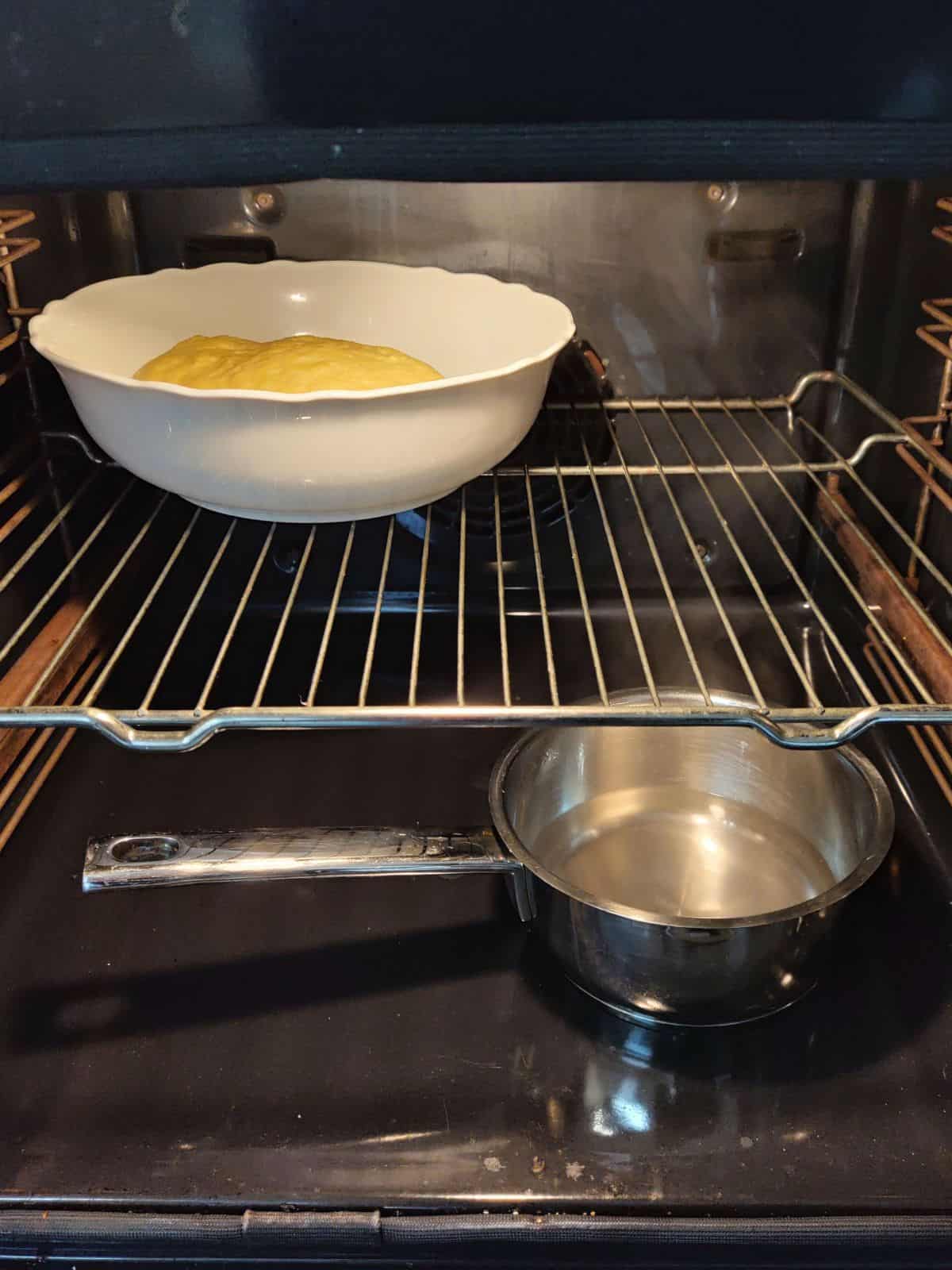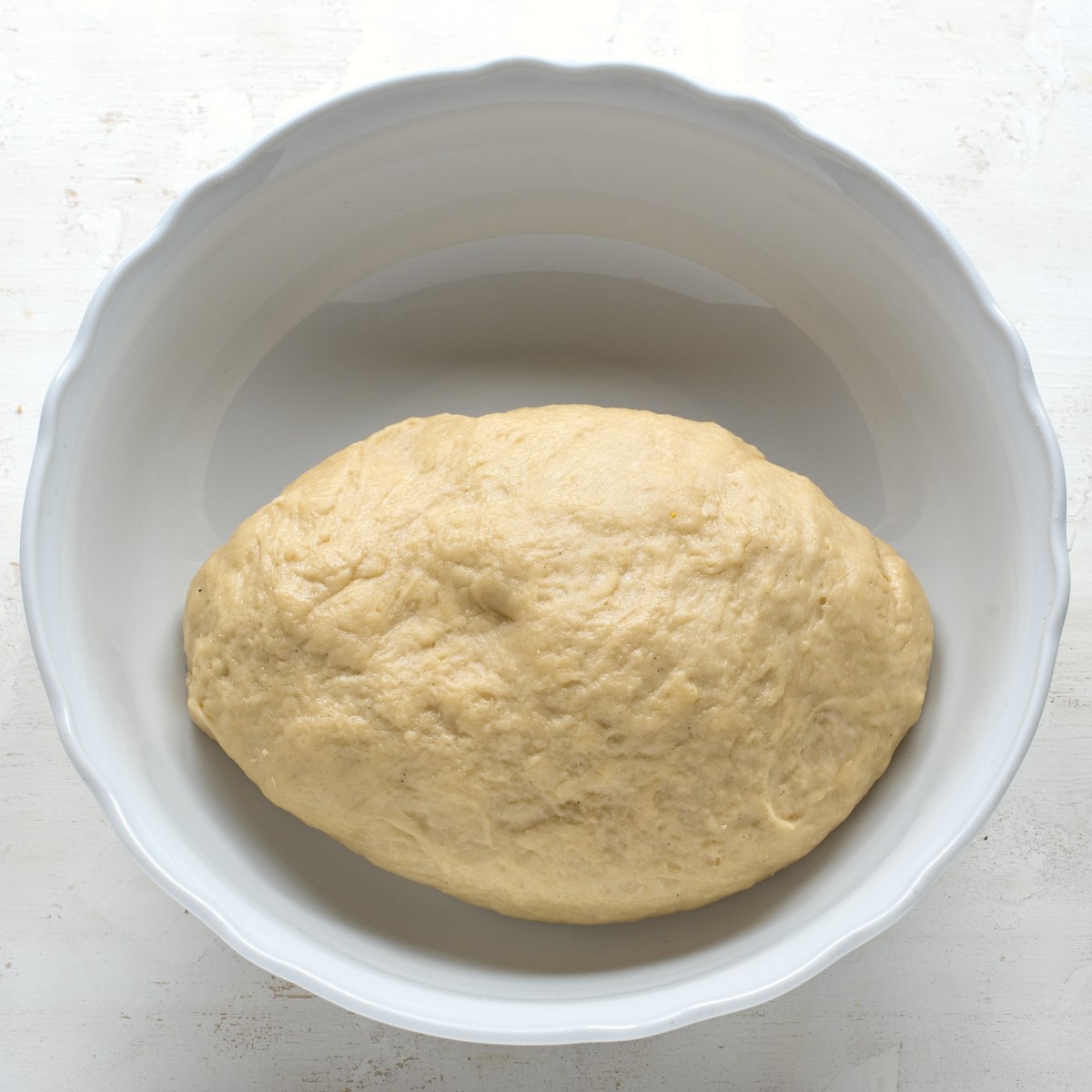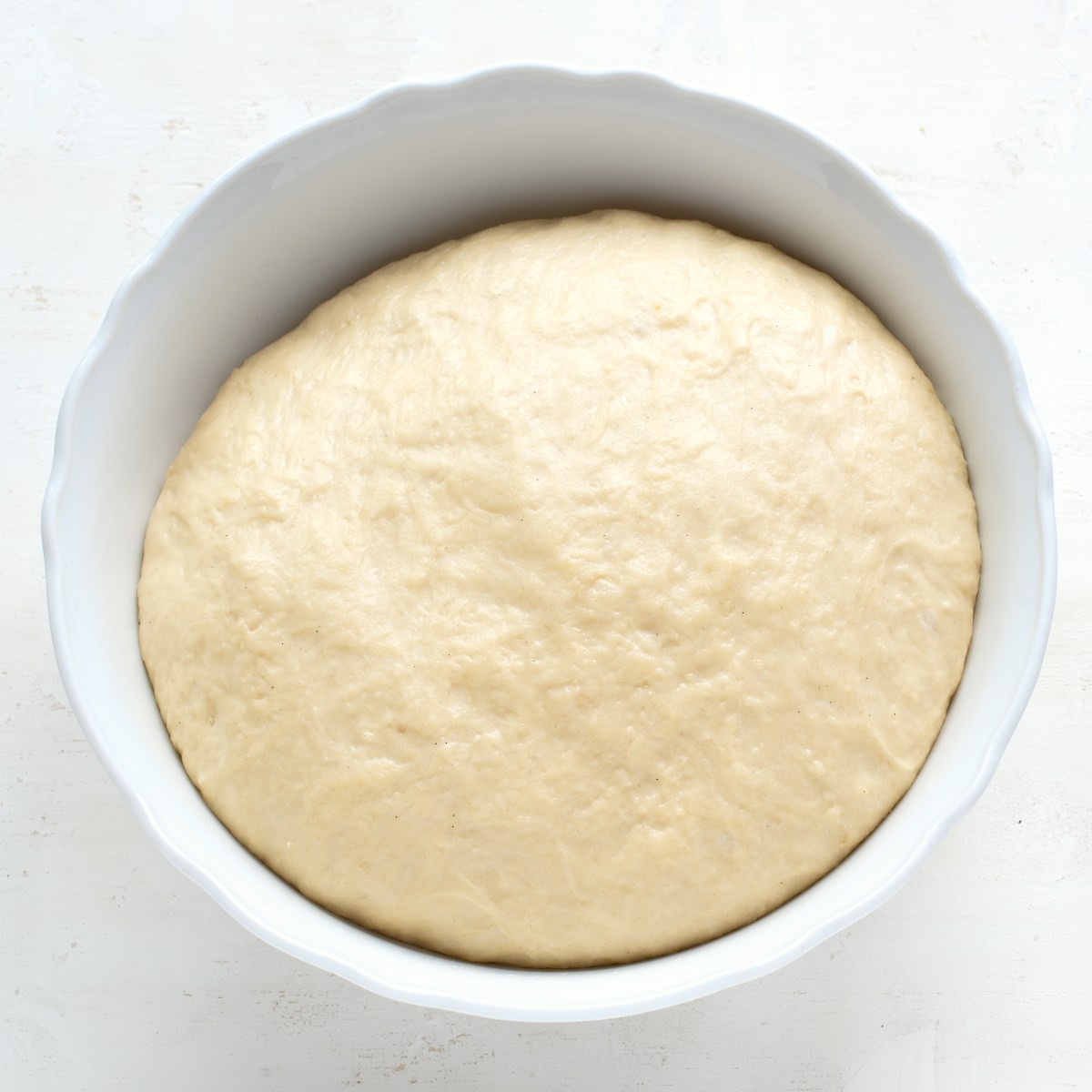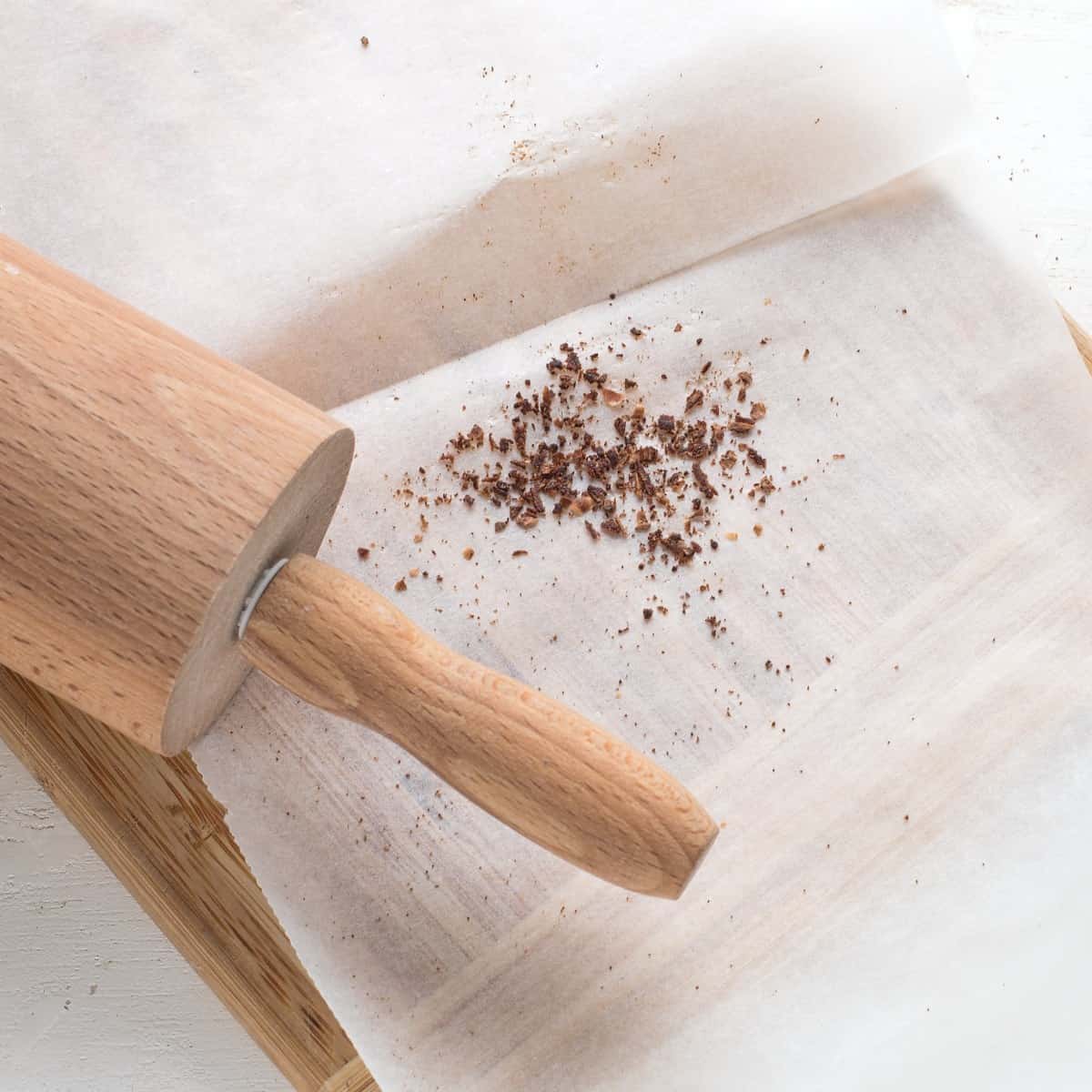Many people are hesitant to bake with yeast dough. A common worry about baking bread, pizza, or other pastries is that the dough won't rise enough. Let me show you my simple, tried-and-true method for rising dough in the oven, which ensures constantly a perfect result even if you are a beginner!

The basic idea is that you already have smooth, kneaded dough made from the ingredients in the recipe. The types of yeast you used include either active dry yeast or fresh yeast.
Now the recipe says to let the dough rise in a warm place until it has doubled in size.
Here's what you do:
- Fill a pot or larger mug with hot steaming water.
- Place the pot of water in the bottom of your turned-off oven.
- Move the oven rack to the upper position so that you can still place a bowl of dough on it.
- Put the bowl of dough on a wire rack, ideally in a corner, so that it doesn't sit directly above the pot of steaming water.
- Close the oven door and let the dough rise. Do not turn on the oven, not even to the lowest temperature!
This technique is equally effective for shaped dough or dough in a bowl.


5 Benefits of rising dough in the oven
- Hot water and steam create the perfect conditions for the dough to rise inside the oven. They help achieve consistent results with better flavor development and texture.
- The moist, warm environment makes dough rise faster than simply letting it sit on the counter.
- The humidity inside the oven will keep the dough from drying out while rising. You don't need to cover the bowl with plastic wrap or a kitchen towel.
- This method will allow the dough to rise in any outdoor conditions, for example, if your house is cold in the winter months or your kitchen is drafty.
- Rising the dough in a turned-off oven with a pot of hot water will ensure an even distribution of mild heat without damaging the dough.

I learned this oven-proofing method many years ago while working as a student in a professional bakery.
They had there high racks into which we stacked baking sheets with pastries. We always moved the racks to a large steam room, which was warm and full of moisture. The dough inside was rising like crazy!
For my home baking, I found a clear answer to the question of where to rise dough and how to speed up the rising process.

Frequently asked questions
Yeast dough rises due to the production of carbon dioxide gas that is released by the yeast. This gas gets trapped in the dough, causing it to expand and rise.
Generally speaking, yeast dough needs 1-3 hours to double in size. The rise time is affected not only by the environment in which the dough is allowed to rise but also by the amount of fat in the dough. The more fat in the dough, the heavier it is and the longer it takes to rise.
While light doughs for bread or dumplings rise faster, rich doughs for sweet pastries require much more time.
There are several possible reasons your dough may not be rising, even in the warm and moist environment of the oven.
One of the most common causes is that the yeast you are using is old or weak.
Another possible reason is that you didn't dissolve the yeast in warm liquid with a little bit of sugar before pouring it into the dough.
Furthermore, if you used too much flour or not enough liquid, the dough may not rise as desired.






Django
What a great tip. Thanks for sharing.
Anicka Cooklikeczechs.com
You are welcome!
cat todd
what temp do you turn the oven up to before turning it off (i apologize if you stated this)..
Petra Kupská
Hi, the oven is turned off, and I just place a pot of warm to hot water on the bottom—just 1 to 2 inches. By closing the oven door, you create an ideal, moist, and warm environment inside for the yeast dough to rise.